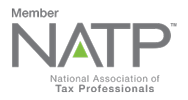| Home | About | Services | |
American Opportunity Credit
This is Available for tax years 2009 through 2017.
You might be able to claim an American Opportunity Credit of up to $2,500 for qualified education expenses paid for each eligible student. This is a per-student limit you must claim in the first 4 years of higher education.
Lifetime Learning Credit
You might be able to claim this credit for up to $2,000 for qualified education expenses. You can claim this credit only once per return, but there's no limit on the number of years you can claim the credit.
Credits don’t work?
You also might be able to claim 9 other education-related tax benefits.
Student-loan interest deduction
If you've started to pay back loans you took to finance higher education, you might be eligible to deduct up to $2,500 per return per year. The student loan interest deduction is an adjustment to income, so you can claim the deduction even if you don't itemize deductions.
Student loan cancellation
If you're responsible for making loan payments and the loan is canceled, you usually must include the amount forgiven in your gross income for tax purposes. However, if your student loan is canceled, you might not have to include the amount in income if you fulfill certain requirements.
Student loan repayment assistance
Loan repayment programs provide student loan repayment assistance to participants if those participants provide certain services. These are usually primary health services in areas where shortages of these services exist.
Coverdell education savings accounts (ESAs)
Coverdell ESAs are tax-advantaged accounts that allow you to save money for education. The earnings are tax-free if used for qualified education expenses. You can't deduct contributions to a Coverdell ESA , However money deposited in the account grows tax-free until you withdraw it.
Qualified tuition plans
A qualified tuition plan (QTP) is a personal savings plan established for paying a student's qualified education expenses at an eligible educational institution. Distributions from the account are tax-free if you use the money to pay for qualified expenses, like room and board.
IRAs
You can take a distribution from your IRA before you reach age 59 1 / 2 without paying the 10% additional tax on early distributions if you pay qualified education expenses for any of these:
- Yourself
- Spouse
- Children
- Grandchildren
Tax-free U.S. Savings Bond interest
You must usually pay tax on the interest earned on U.S. Savings Bonds. However, if you cash in savings bonds for qualified education expenses, you don't have to pay tax on the interest if you meet all requirements.
Employer-provided educational assistance
If you receive educational assistance benefits from your employer under an educational assistance program, you can exclude up to $5,250 of those benefits each year. So, you don't have to include the benefits on your return.
Deduction for work-related education
If you're an employee and you itemize deductions, you might be able to claim a deduction for expenses related to work-related courses you take.
To learn more,see IRS Publication 970: Tax Benefits for Education
Return to Home

 |
205 N Haddon Ave, Haddonfield, NJ 08033
Phone: 856.656.0508 Fax: 856.219.2013 jaimee@hammertaxes.com Secure Client Portal |
 |